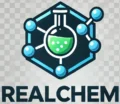Deschloroketamine (DCK)
Deschloroketamine (DCK): Research Chemical Profile and Legal Status
Deschloroketamine—commonly abbreviated as DCK—is a dissociative compound from the arylcyclohexylamine class. It is structurally similar to ketamine, but with the chlorine atom removed, resulting in notable differences in receptor binding affinity and pharmacological profile when evaluated in research environments.
DCK has gained attention for its potential relevance in NMDA receptor studies, neuropharmacology, and analytical chemistry. It is intended strictly for scientific and forensic research and is not approved for medical or human use.
Chemical Structure and Properties
Deschloroketamine is the dechlorinated analog of ketamine, which retains the cyclohexanone backbone and aryl group but lacks the chlorine atom typically present on the phenyl ring. This modification can result in altered solubility, lipophilicity, and receptor interaction compared to ketamine.
-
IUPAC Name: 2-(methylamino)-2-phenylcyclohexanone
-
Molecular Formula: C13H17NO
-
Chemical Class: Arylcyclohexylamine, dissociative anesthetic analog
-
Form: White to off-white crystalline powder
-
Applications: In vitro receptor studies, SAR analysis, forensic testing
Due to its structural similarity to ketamine, DCK is often examined in studies comparing arylcyclohexylamine derivatives and their receptor modulation characteristics.
Reported Effects (Anecdotal)
Deschloroketamine has not undergone clinical trials, but anecdotal data from independent research communities suggests that it may exhibit dissociative effects similar to ketamine, albeit with differences in onset, duration, and intensity.
Reported (non-clinical) effects include:
-
Sensory dissociation
-
Perceptual alteration
-
Euphoria or mental detachment
-
Impaired coordination and focus
-
Delayed onset and prolonged duration (compared to ketamine)
These reports are unverified and are shared only for informational context within research discussions. No conclusions should be drawn without formal, peer-reviewed data.
Laboratory Handling and Safety
Given the limited toxicological data available on DCK, strict laboratory protocols must be followed when working with this substance.
Recommended lab practices include:
-
Use of gloves, goggles, and protective lab clothing
-
Working in a well-ventilated area or chemical fume hood
-
Labeling and secure storage in a controlled access environment
-
Avoiding all skin contact, inhalation, and ingestion
-
Waste disposal in accordance with institutional and regional regulations
DCK should only be handled by professionals with experience in working with novel dissociatives.
Legal Status of Deschloroketamine (DCK)
The legal status of DCK varies significantly across jurisdictions. In many regions, it may be unscheduled but could still fall under analog legislation or psychoactive substance controls.
-
United States: Not specifically scheduled but may be regulated under the Federal Analog Act
-
United Kingdom: Controlled under the Psychoactive Substances Act (PSA)
-
Germany: Listed under the NpSG (New Psychoactive Substances Act)
-
Canada & Australia: May fall under analog provisions
-
European Union: Regulation differs by member state
Researchers are responsible for ensuring compliance with all applicable local, national, and international regulations before handling or purchasing this substance.
For Research Use Only
Deschloroketamine (DCK) is not intended for human or veterinary use. It is offered exclusively for laboratory research, analytical reference, or forensic investigation by qualified professionals or institutions.
Showing all 2 results


